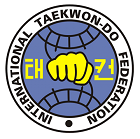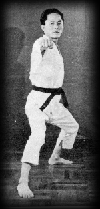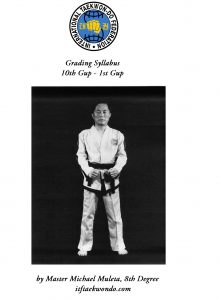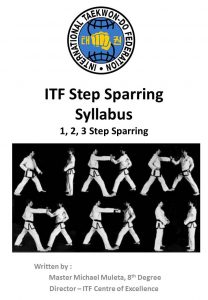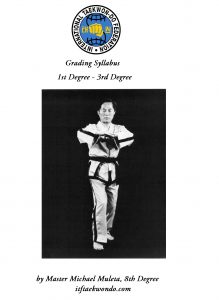Taekwon-Do History
Whilst Taekwon-Do history is relatively modern, having only been name in 1955, it’s roots trace back many centuries.
Although many myths and legends exist about it’s origins and history, martial arts, or bare-hand combat, has been generally accepted as being introduced by an Indian Buddhist monk called Bodhidharma (448-529 AD)
He reputedly travelled from an Indian monastery to China instructing in the areas of Buddhism (Zen). During his visit he introduced Buddhist monks, in the Shaolin Temple, to a form of mental and physical conditioning and training involving a set of 18 postures (similar to Tai Chi) imitating temple idols.
 As a result these monks became the most formidable fighters in China. Their style later became known as Shaolin boxing.
As a result these monks became the most formidable fighters in China. Their style later became known as Shaolin boxing.
As Buddhism became increasingly, popular, it spread throughout other Asian countries like the Philippines, Thailand, Indonesia, Korea and Japan. An increased interaction between these countries allowed for some comparisons and further development of their fighting styles, and also variations in styles became apparent between countries.
Korean fighting styles can be historically traced back many hundreds of years to the three major Kingdoms of Korea: Silla, Koguryo, and Baek Je (6th Century AD)
These times throughout history were rife with constant and violent feuding between the Kingdoms and also their bitter enemies, the Japanese. The survival of these Kingdoms was dependent upon the development of strong armies. For these ancient warriors, mastery of the fighting skills was paramount, as any mistake would result in almost certain death.
The famous Hwa-Rang Warriors, an elite fighting core, were formed during the Silla Dynasty. These individuals underwent the most intensive training rituals, severe physical and mental conditioning, including mountain climbing, swimming turbulent rivers in freezing conditions, as well as training in fighting weapons including spear, bow, sword and hook.
They placed as much emphasis on training the mind as well as punishing their bodies, and ultimately discovered that mastery of the body comes as a result of mastery of the mind.
Each soldier strictly followed the Haw-Rang Warrior Code:
Be loyal to your King
Be obedient to your parents
Be honourable to your friends
Never retreat in battle
Make a just Kill
Because of their superior courage, ability in the battlefields, and their strict loyalty
and philosophy, their deeds became legendary. The Haw-Rang Warriors gained the respect of even their most bitter enemies, and would go down in history.
Due to the dominance of these warriors, the Silla Dynasty, although the smallest, became the most powerful of the three Korean kingdoms. The arts of Taekyon and Soo Bak Gi flourished during the Koryo Dynasty (935 AD), after their defeat of the Silla Kingdom.
During these times, training in Taekyon was compulsory for all soldiers, and perfection was the only way of being promoted through the ranks. Soldiers had to prove their mastery at an annual competition at the Kak Chon temple. Major governmental positions were determined by performance in these Fighting skills.
Over the next thousand years, the martial arts generally became less pronounced in Korea, apart from their military uses, and finally in 1909, with Japanese occupation of Korea, the practice of martial arts by Koreans was forbidden.
The only, major survivor of this catastrophe was Taekyon, with much training carried out in secret, many Koreans made their way to foreign lands during these times, where they could test their art against other styles including Karate, Jiujutsu, Judo, Kung Fu, Tai Chi. This enabled them to improve their own style and gain techniques from other styles.
In 1945 Korea was liberated form Japanese rule, and many Koreans returned to their homeland, bringing back with them the martial arts knowledge gained from abroad. At this time, the Republic of Korea (R.O.K) armed forces were formed. This was a major turning point in Taekwon-Do history.
In 1946, after his release from Japanese prison camp, 2nd Lieutenant, Choi Hong Hi began teaching his style of unarmed combat to these forces. Choi was primarily responsible for the fighting training of these soldiers, and later soldiers of most major countries armies adopted General Choi’s teaching.
The R.O.K demonstration teams, led by Choi, were later to become famous for their amazing skill displays while spreading the arty across the world, initially Vietnam, Malaysia and other Asian areas. Many famous Taekwon-Do masters of today were members of these demonstration teams.
In 1955 a panel of instructors, politicians and historians most notably General Choi Hong Hi (dec), decided upon the name Taekwon-do to represent Korea’s national martial art.
General Choi was credited with the development of Taekwon-Do and is universally referred to as the Founder and father of Taekwon-Do.
General Choi deeply researched and developed a modern martial art differing from any former art terminology, created techniques, systems, methods, rules, practice suits and philosophy on the basis of his self-confirmed theory and conviction.
Thus Taekwon-Do was named on the 11th April 1955.
Since then, the martial art Taekwon-Do has been improved in the sophistication and effectiveness of its techniques and overall physical fitness it imparts to its practise.
In addition to links on the resources pages, you may also like to consider our series of Ebooks in our Online Store.
Our ebooks come with detailed instructional information, step by step descriptions and video link to all sequences.
Website sponsored by – Global Fitness Institute
